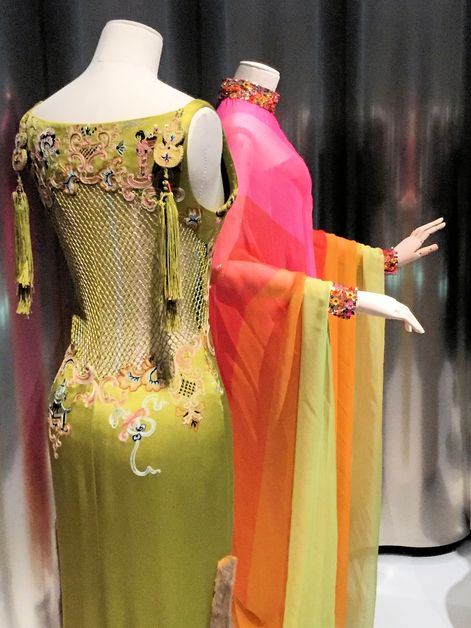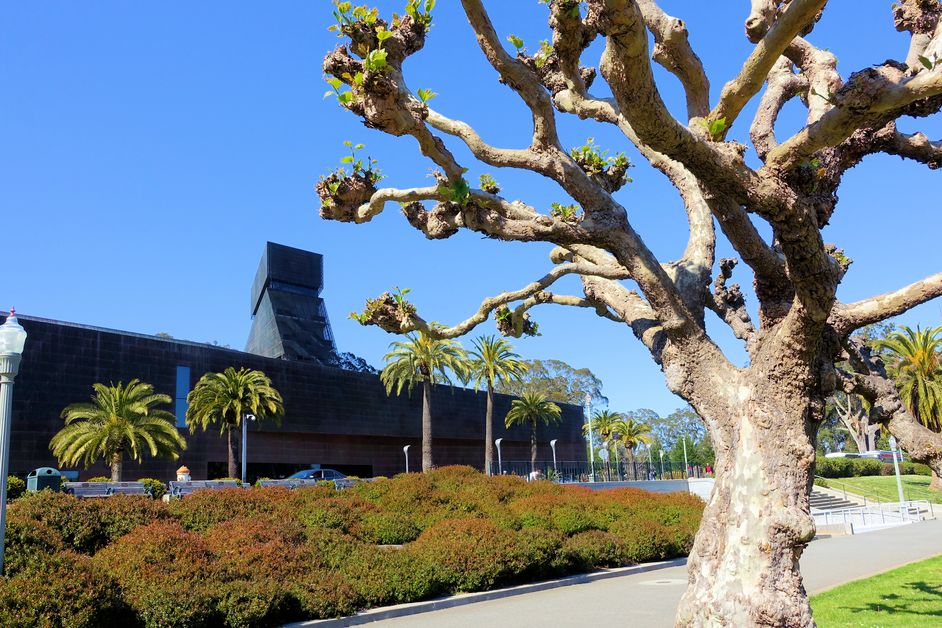“I AM IN RAPTURES AT THE WONDERS OF NATURE.”CLAUDE MONET EXHIBIT AT THE DENVER ART MUSEUM.

When Marla first mentioned we should see the Denver Art Museum’s new Monet exhibit I remember feeling less than enthusiastic, “What, …more water lilies?” She said I would love it,…and “LOVE IT” was an understatement! I haven’t felt so uplifted from a museum show in years! The exhibition is the largest Monet show in the U.S. in decades with over 120 paintings from museums and private collections in 15 countries. “Claude Monet: The Truth of Nature.” will only be seen in the U.S. in Denver.

We were almost transfixed by the first painting in the gallery! The show traces the time Monet spent in a number of cities in Europe and his evolution to becoming one of the world’s most important artists.

“Boulevard des Capucines” 1873-74. The painting shows Monet’s movement toward modernism with the blurred rendering of people on the street.

“The Beach at Trouville” 1870. The work depicts well-dressed Parisians enjoying this famous Normandy beach. The figures are loosely painted. Monet always painted “en plein air”, or outside, as he felt this was the only way he could capture the true nature of his subject.

The colorations of the vibrant trees and grass almost overpower the well-dressed Parisians in his 1878 painting, “The Parc Monceau.” You can see his obsession with changing light. The park is a few blocks away from the Paris apartment of our friends, Kathy and Philippe.

“The Geese.” 1874.
“In chasing the merest sliver of color…I want to grasp the intangible…color, any color, lasts a second, sometimes 3 or 4 minutes at most. What to do, what to paint in three or four minutes? They’re gone, you have to stop. Ah, how painting makes me suffer.”

“The Meadow at Vertheuil” 1879. You can see how he is evolving away from painting people and is more into the surrounding nature.

“The Road to Vetheuil”1879.
“Color is my day-long obsession, joy, and torment.”

I loved “Rocks at Belle-Ile, Port Domois” 1886. It transported me to a trip the week before while walking the cliffs on the island of Guernsey.

Monet was very different from other artists of his day in that he lived and painted in a number of countries and cities in Europe. He traveled to the Italian Riviera to paint “View of Bordighera.” 1884. The “enchanting light and exotic vegetation of the Mediterranean was unlike anything he had experienced before and inspired a number of bright landscape paintings.”

He painted “The Rio della Salute” in 1908 while in Venice.


He painted”Charing Cross Bridge, Reflections on the Thames” in 1899-1904 at the top and “Charing Cross Bridge” in 1899 below. He was fascinated by changing light on the same subject.

“Oat Field” 1890

“Poplars on the Epte” 1891 shows a looser, impressionistic style with a focus on reflections and changing light.

“Morning on the Seine, Giverny” 1897.

“Under the Poplars” 1887. Note how the figures in the foreground are totally subordinate to the field and the trees.

This is one of the first paintings of the gardens in Giverny, “Peony Garden”1887. He began renting “The Cider House” in Giverny in 1883. This depicts his early garden before he transformed it into his now-famous waterlily pond.

And now we bring you…water lilies. “Water-Lilies” 1908.

We see shapes beginning to dissolve in this work with the heavy and bold application of paint. It’s all about the reflection on the water. “Water-Lilies” 1914-15.

He loved his water-lily pond and the Japanese Bridge and painted it oodles of times. “Water-lilies and Japanese Bridge” 1899.

I was amazed by how many paintings were loaned from private collections!

The exhibit ends with this wonderful work, “The Water-Lily Pond” 1918.
“You have to know how to seize just the right moment in a landscape instantaneously, because that particular moment will never come again, and you’re always wondering if the impression you got was truthful.”

More art,…this time in the creative way of displaying a book on Monet.

And,…in this postcard of a 2000 New Yorker cover.

A very long line of people waiting to make their purchase.
I’ve always had a fascination and affinity for plein air paintings. My great-grandfather was a gallery owner and artist in pre-earthquake San Francisco. He would often head to Marin County to paint with his artist friends in the 1890s. My grandmother was also a good artist as well. Sadly, I did not inherent prowess with the brush!
PHOTOS: DICK GENTRY
About The Author
admin
Related Posts
FASHION AND FABRICS…Reminiscing on how the fashion world influenced our search for exciting fabrics.
The death of iconic journalist, Andre Talley, has put the fashion world on the brain…
October 25, 2019LET’S GO TO A MUSEUM! A FEW OF MY FAVORITES
Most of us have our favorite museums which stimulate and enlighten our innately curious nature…
October 25, 2019

philippe Auzas | 5th Jan 20
I have always found the nénuphars very boring ! However two of the pictures you have selected are striking .
The boulevard des Capucines because, as a flâneur in Paris , you immerse yourself in the life of the city ,just like Baudelaire used to write . This painting done a few years after the death of Baudelaire illustrates this so vividly ! This boulevard, by the way has not changed too much thank god !
The beach in Trouville is also remarkable and so romantic . I hope one day we can walk together on this very beach and you will see that, besides the way people dress today ,it has not changed ! Philippe
admin | 7th Jan 20
We really need to do that, Philippe!